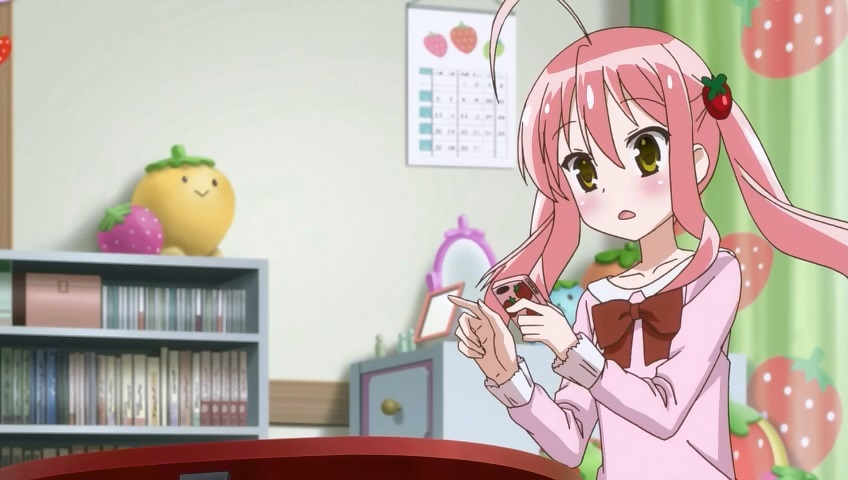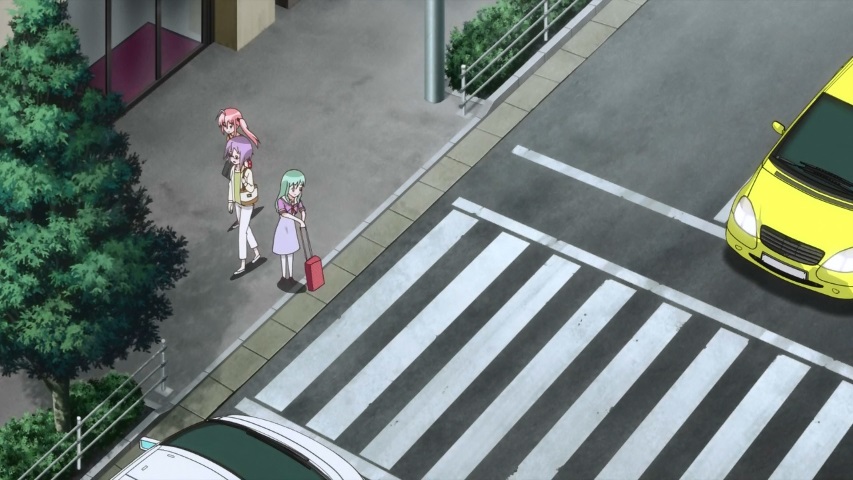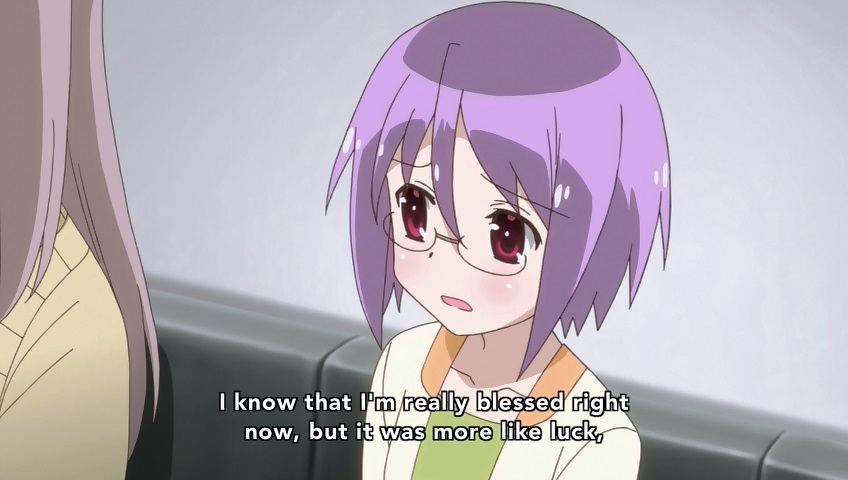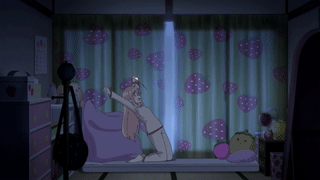It’s funny that this site now has two reviews of Sore ga Seiyuu! But what the hell. I’ll cover it too.
And now that the Incubator’s out of the bag, I’ll also try to cover the rest of the anime I managed to finish last season: Prison School (3/5) , Aoharu x Kikanjuu (3/5), GATE (1/5) and Rokka no Yuusha (1/5). Yes, GATE and Rokka are bad. /人 ◕‿‿◕ 人\
Consumer Review
Score: 3/5 (Worth Watching)
Sore ga Seiyuu! is overly sweet slice of life for grown-ups. It depicts realistic problems and anxieties, exaggerated for laughs and resolved with equally exaggerated optimism. It’s worth watching, but I recommend trying Shirobako first if you haven’t, as it’s a more grounded take on the genre.
Critical Review
Spoiler warning: spoiler light, but not spoiler free. I make somewhat vague references to events that happen fairly late in the show.
Sore ga Seiyuu! has two rare skills among its peers. It knows how to pace information over multiple episodes and it knows how to wring a thousand words out of its visuals. This combination allows it to use small details to unobtrusively lay down a rich framework for the ongoing narrative to build on.
For example, Ichigo’s room is shown to us early on, before she receives any focus as a character. Seeing her strawberry decor proves to us that her obsession isn’t an act she does to get noticed. She sincerely likes the aesthetic, but also believes that the attention she gets from indulging in it benefits her career. This forms the basis of her interaction with Yui Horie (who compartmentalizes personal and professional) and the dilemma in her book narration job, both of which happen two episodes apart from one another. Her dialogue in that early room scene isn’t even directly related to these future events, it’s purely the furniture which primes the viewer for these stories.
Something similar is done in preparation for Rin’s character episode. An earlier episode opens with her walking alongside fellow voice actors to a job, as she nonchalantly pulls a roller suitcase full of schoolwork. She doesn’t break a sweat when she lifts it up the curb and is all smiles when she studies during her work breaks. It’s clear that she doesn’t struggle under her burden. This clarifies the conflict in her character episode that’s three episodes in the future by showing her carry a bag.
The persistent imagery in the character designs outline the two overarching moods of the show. Main characters are shorter than average, have rosy cheeks and “anime”-colored hair. This contrasts with the industry veterans who look relatively ordinary or, when caricatured, plain. At one level, this is a clear division between the vulnerable newcomers and the seasoned veterans. Thematically, it illustrates the divide between lighthearted fiction and realistic drama.
The entire show is built around the interplay between these two themes and, unfortunately, the show fails to balance the two.
The more visible, lighthearted half consists of comedy, wacky faces and cuteness. This side is often the solution to conflicts and challenges, or the mood at which they’re faced. The realistic half, on the other hand, lays down the premise and is the source of conflict and challenge.
The two can work together when the realism doesn’t counter lightheartedness. One way is with “neutral” topics such as cameo appearances, product placement and freeze-frame mascot lectures. Another way is by making the realism part of the comedy, like in the exaggeration of Pipo’s insignificance.
The two work best when lightheartedness is a believable solution to the realistic problem. This is the case with Futaba’s personal anxieties. Comedy can reveal that the true scope of the problem is falsely magnified by worrying, and it can be used to brush off those worries.
But many of the real-life problems, especially those which linger for long periods of time, can’t be solved by optimism alone. Ichigo’s can-do attitude helps her get through unpaid bills and layoffs, but it’s an incomplete resolution. She can’t always rely on getting a lucky job in the nick of time. Futaba’s chronic lack of major work is a shadow over her career, and the show skillfully addresses this at the finale. But for the rest of the series, she seems to irresponsibly ignore it. Everyone says out loud that they’re going to “work hard”, and we’re sometimes treated to bits of cutesy rehearsal. But we seldom see the consequences of sacrifice. There’s no bite to the tension.
This is clearest in Rin’s character episode. Her conflict centers around whether her career still contributes to her personal growth or if it has caused her to stagnate. Then, after a speech about how anime production involves a lot of people, she completely forgets this and promises to “work hard” for these people. The issue was completely sidestepped and somehow solved itself.
And it’s not that I want the show to become darker! What disappoints me is that the show has the talent to cover consequences and sacrifice without betraying its bright mood. And sometimes, relevant resolutions wouldn’t even be depressing. All Rin needed to realize, for example, was that her career doesn’t socially isolate her.
Overall, the drama simply fails to take advantage of the potential laid down by clever storytelling technique. When it comes to the small stuff, the show is entertaining, funny and uniquely relatable. It’s very satisfying from moment to moment. But too many attempts to be impactful fall flat and leave me unfulfilled.
It’s really cute, though :3






